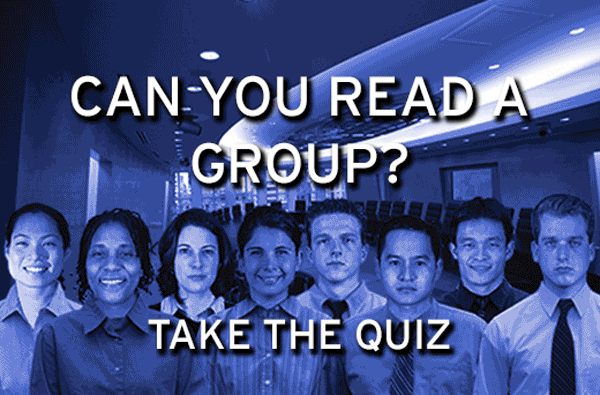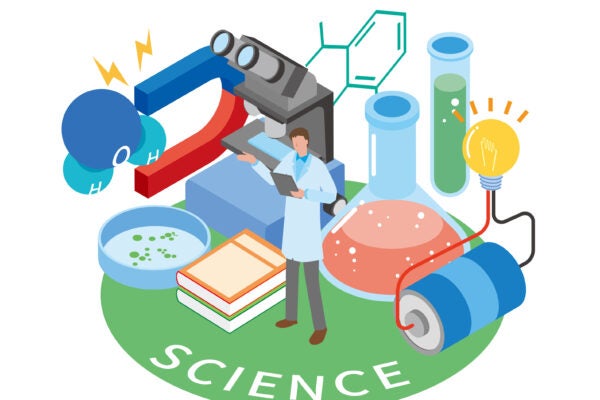Can You Read a Group? This New Test Will Tell
Most managers can gauge an employee’s emotions one-on-one, but can they do it with a group?
By Steve Brooks

Observe a rock star onstage, and you might notice an almost telepathic bond with their audience. They seem to sense what a crowd’s feeling and tailor their performance to fit.
It’s a skill any manager might envy, especially when facing a room full of restless employees.
“If you can recognize people’s emotions from their expressions, it gives you a base to make inferences about what people are thinking and how they might be likely to respond,” says Caroline Bartel, associate management professor at the McCombs School of Business. “If you’re a team leader explaining a new change, you can use that information to figure out how to respond in that moment.”
That empathetic ability intrigues Bartel, who has long studied group emotions. In a recent paper, she debuted an assessment tool to measure who’s got that ability and to what degree.
Dubbed the Emotional Aperture Measure, it rates a person’s ability to pick up the patterns of feeling of an entire group, and it’s a tool that could find a place in management training.
The concept of emotional aperture came from colleague Jeffrey Sanchez-Burks of the University of Michigan, who co-authored the paper along with Laura Rees of Vanderbilt University and Quy Huy of INSEAD in Singapore.
As a camera adjusts to bring out different details of a scene, the theory goes, so a person can widen their focus from reading an individual to reading a group. Explains Bartel, “You’re focused more on the forest than the individual trees.”
But it’s more than a change in view, she contends. It uses a different mode of thinking than appraising a single person’s emotions. In one-on-one conversation, a manager can gather a rich collection of cues, from tone of voice to body language. In a group, by contrast, cues can flicker on and off of members’ faces in a hurry.
“When you move to a group setting, there are understood rules about what is acceptable and not acceptable to express,” Bartel explains. “You know it’s not okay to overtly express anger at colleagues. So instead, you may quickly show anger through nonverbal behavior, realize you’re doing it, then just as quickly turn it off.”
That’s why the EAM gives a viewer only two seconds to scan a group — too little time to pick out each member individually. A computer screen flashes a two-panel filmstrip. In the first panel, all faces are neutral, while the second panel is a mixture of smiles and frowns. The viewer assesses percentages of positive and negative reactions and is scored afterwards for accuracy.
Is global processing, as the researchers call it, really a separate kind of thinking? To find out, the researchers showed 148 subjects 17 pairs of panels. Then they primed the viewers’ mental pumps in two different ways. All were shown the same Jackson Pollock painting, but half were told to focus on the overall painting, while the other half zeroed in on specific features. Then both groups took the EAM again.

The second time through, subjects who had been primed to think globally performed significantly better on the EAM and significantly better than subjects who had been primed to think analytically. (The analytical group showed no improvement.) Says Bartel, “It’s evidence that this emotional aperture ability is in fact regulated by a distinct processing style.”
To see whether it could be useful in a business setting, the researchers also ran the EAM with 96 high-level managers in an international leadership development program. After managers took the test, their subordinates evaluated their leadership performance anonymously.
The results found a strong correlation between leadership ratings and EAM scores — stronger, even, than other factors that might make good leaders, like length of time on the job or being an extravert.
Concludes Bartel, “If someone has a high emotional aperture ability, if they’re good at reading collective affect and using it in a productive way, it makes subordinates view them as an effective leader.”
The EAM, she suggests, offers a novel way to check the interpersonal skills of managers, alongside other personality tests like the Five Factor Model or Emotional Intelligence.
“Leadership, by definition, requires influence and interaction with other people,” says Bartel. “If you’re getting regular feedback that, as a manager, you seem unresponsive to people’s needs, then maybe you’re not skilled in recognizing people’s emotions. This test gives people a baseline of their ability. And like any ability, you can improve it.”
Now that she’s validated the test, she says, it can also be used for more detailed research. The database that provided the photos, the Montreal Set of Facial Displays of Emotion, covers other feelings besides positive and negative reactions such as happiness, sadness, anger, fear, disgust, and embarrassment. By Photoshopping those faces onto filmstrips, investigators could use the EAM to measure specific strengths at reading each of those emotions specifically.
“If you’re making mistakes reading people’s emotions, what cues are you missing?” asks Bartel. “The cool thing about this instrument is that you can customize it to track any emotion.”

Assessing Collective Affect Recognition via the Emotional Aperture Measure was published in the journal Cognition and Emotion. Readers are invited to take the emotional aperture test and obtain their personal results for free.
About this Post
Share:


